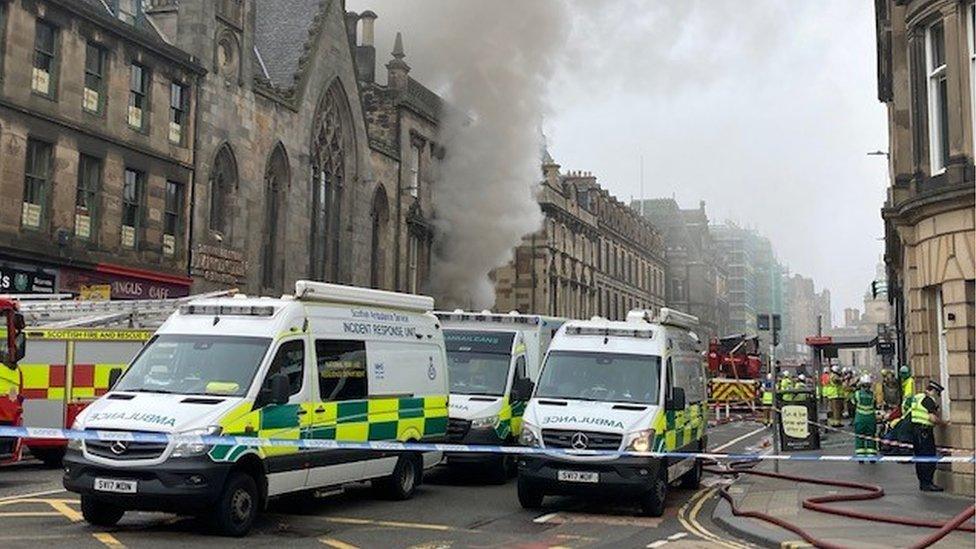Entrance to forgotten square revealed by huge fire in Edinburgh
- Published

Jamie Corstorphine showing the evidence of where a large gate was hung on the wall
The entrance to a forgotten square which was once home to upper-class society has been found inside a pub during renovation work following a huge fire.
Using old maps and directories, experts have discovered the goods entrance led through slum dwellings into an area where physicians, advocates and writers lived.
Brown Square, which no longer exists, represented the most ambitious new development ever attempted when it was built in the early 1760s in Edinburgh.
It was the first development outside the old city walls and offered an exclusive setting for Edinburgh's professional classes.
The entrance passed through an old slum tenement and shop store in Candlemakers Row - where candles were stored outside of the city in case of fire.
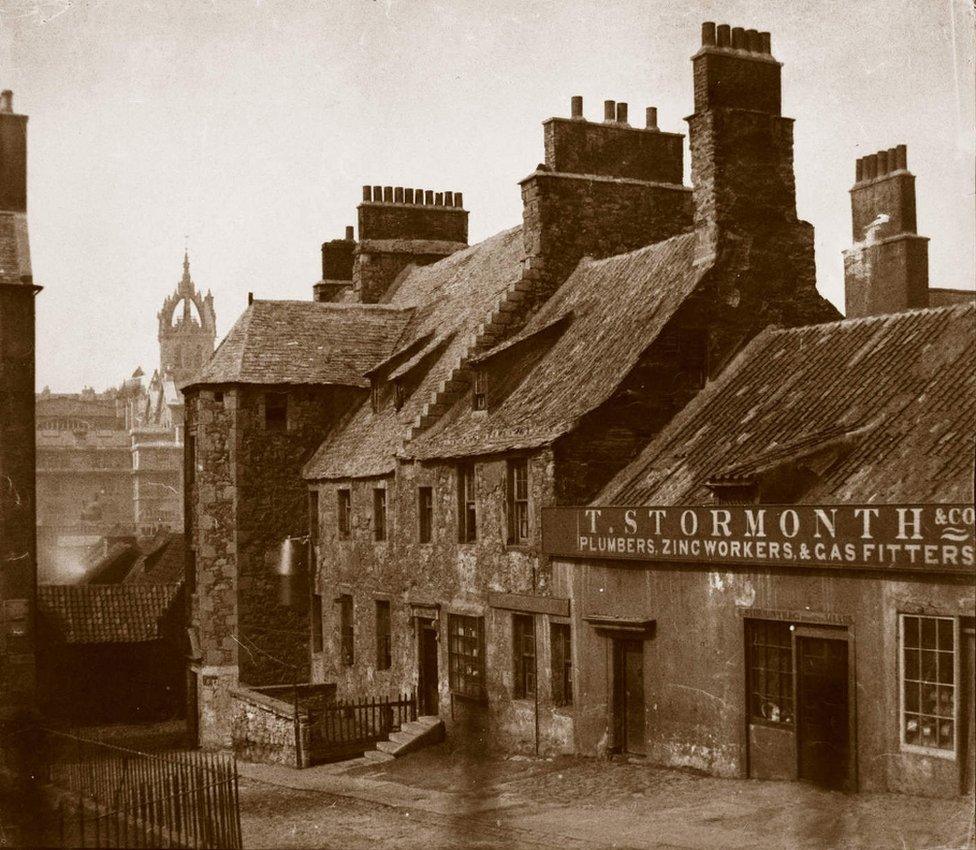
Brown Square no longer exists
An extension was later built onto the corner of the building when George IV Bridge was built on top of Brown Square between 1827 and 1836.
It has now been discovered that this contained an ironmongers, which sold the working classes everything from spades and shovels to turnip cutters and candles.
Just a few doors up the street at number 59 was a coaching courier.
Experts believe it would have used the ironmongers for tacks for the horses shoes and parts for bridles.
Jamie Corstorphine, a local historian who is manager of the City of the Dead Tours, said: "It would have been like a 24-hour taxi rank but with horses and coaches."
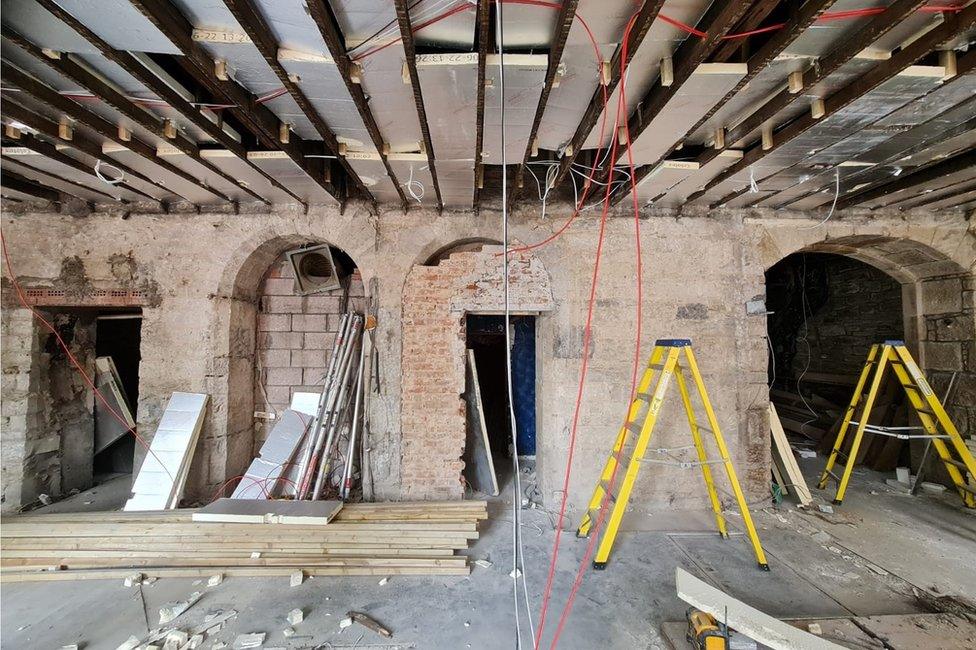
Archways were uncovered after layers of plaster, wood and corrugated iron were peeled off following the fire
Mr Corstorphine carried out weeks of research for BBC Scotland following the discovery of the old entrance inside The Oz Bar.
He said: "We can see here that the lower classes lived right next to the upper classes, something that still happens today in Edinburgh.
"At the bottom of the street is the Cowgate which was full of street hawkers and was a low class of living.
"It's where the Irish immigrants set up a life as best they could in the 1820s - it was called Little Ireland."
He said the gentry would cross George IV Bridge and look down at the poor people in the Cowgate and Merchant Street.
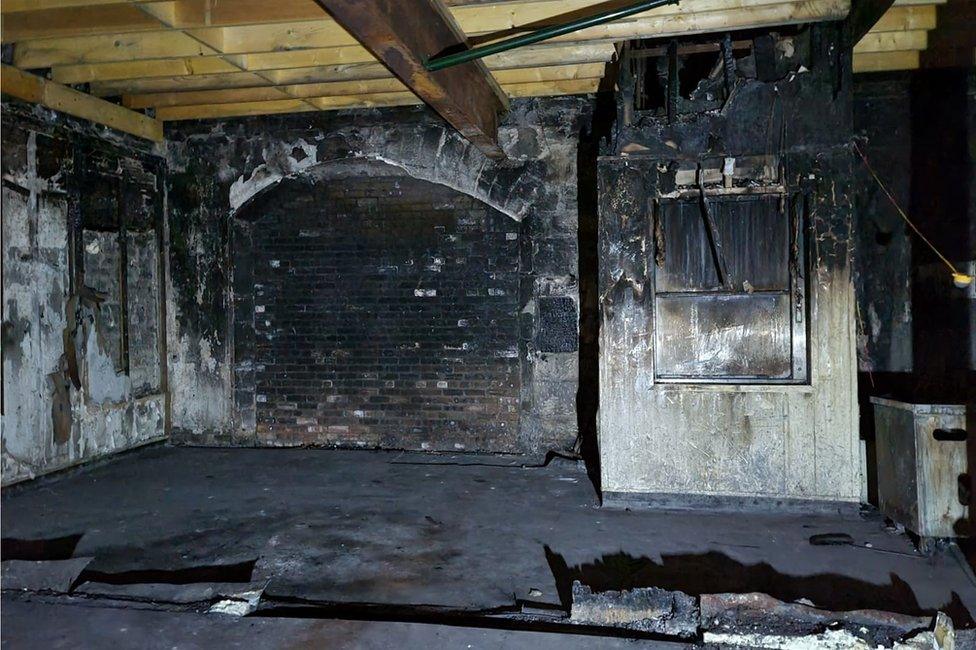
The fire is understood to have started inside the basement of Patisserie Valerie cafe
Mr Corstorphine said: "These men in their top hats, canes, pocket watches and breeches would enjoy looking down at this living zoo, it was entertainment for them.
"It was a self pick-up to remind them there was always someone worse off than you."
Robert Louis Stevenson said in 1878 of nearby South Bridge: "To look over the South Bridge and see the Cowgate below full of crying hawkers is to view one rank of society from another in the twinkling of an eye."
George IV Bridge was built as a route to connect the centre of Edinburgh - the Royal Mile - over the Cowgate and Merchant Street to the south side.
In August 2021 a huge blaze destroyed many businesses at one end of the 300 metre long bridge, which stretches up through two streets.
The blaze is thought to have started at Patisserie Valerie, which has a basement running under the Elephant House cafe on George IV Bridge - the name for the street at the top of the bridge.
The alarm was raised by a cleaner at the Elephant House cafe.
The Oz Bar and Merchants restaurant are at the bottom of the bridge in the street below. They were flooded with thousands of gallons of water used by firefighters to put out the blaze.
The water damage meant workers were forced to remove several layers from the pub's walls in Candlemaker Row - revealing stonework which was different to the rest of the building.
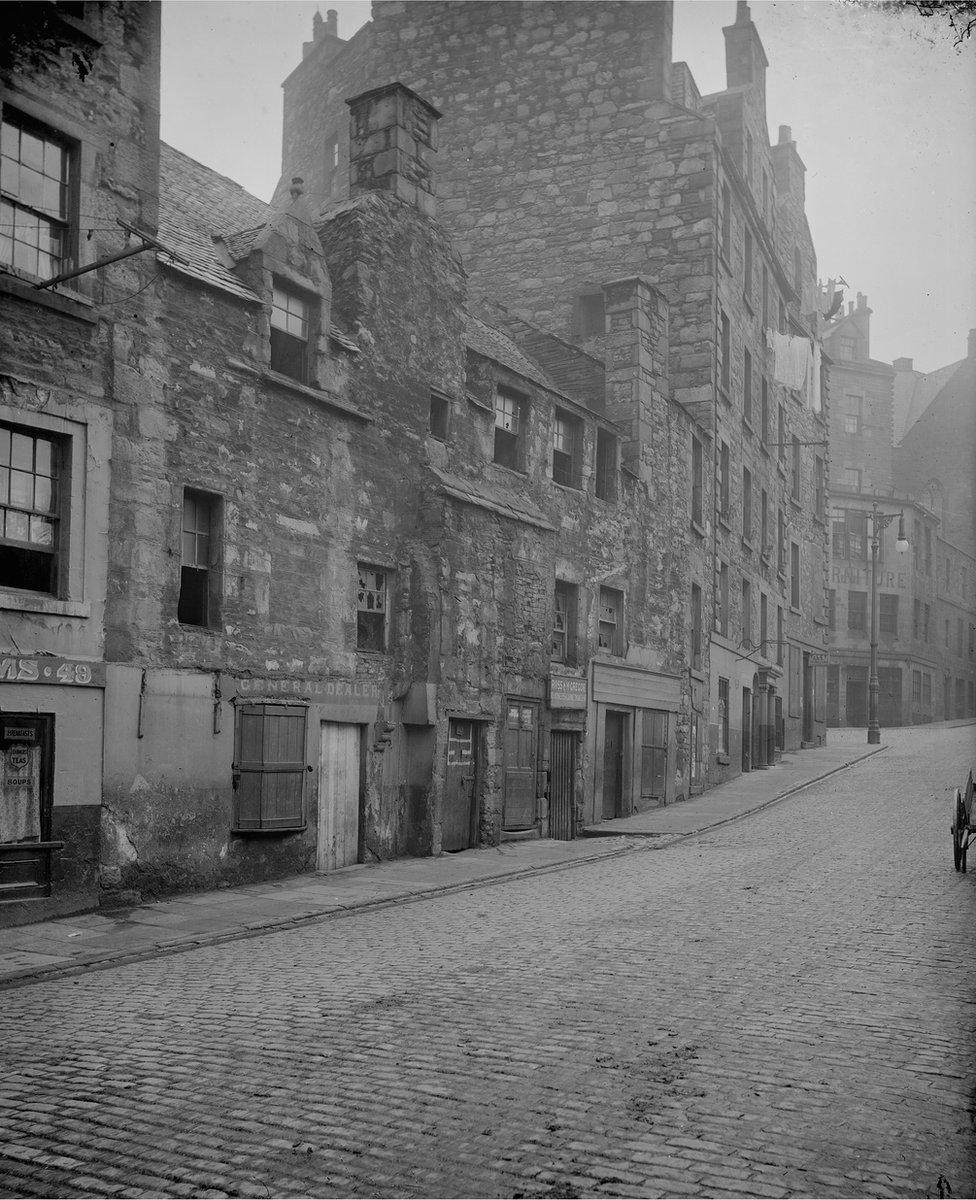
This photograph from 1900 shows 33 Candlemaker Row in the far right of the picture
After visiting the site Mr Corstorphine said he could see that the inside wall had at one time been outside.
He said: "This inside wall dates around 1776 and is the original frontage of the tenement.
"You can see where a big gate has been hanging in the arch, which would have been a goods entrance from Candlemaker Row leading into Brown Square.
"It is rough cast the same as the course rubble frontages in the area at the time, so it is clear the iron merchant and now Oz Bar was an extension. These were slum dwellings."
He was also able to discover that iron merchant Redpath, Brown and Co traded from there from 1838.
Brown Square was built by architect James Brown, who also designed George Square, which still exists today in Edinburgh.
Archives show that those who lived in Brown Square included physician Joseph McKenzie; advocate John McLaurin; lord justice clerk Thomas Miller; Lady Agnew; and a writer to the signet, Isaac Grant.
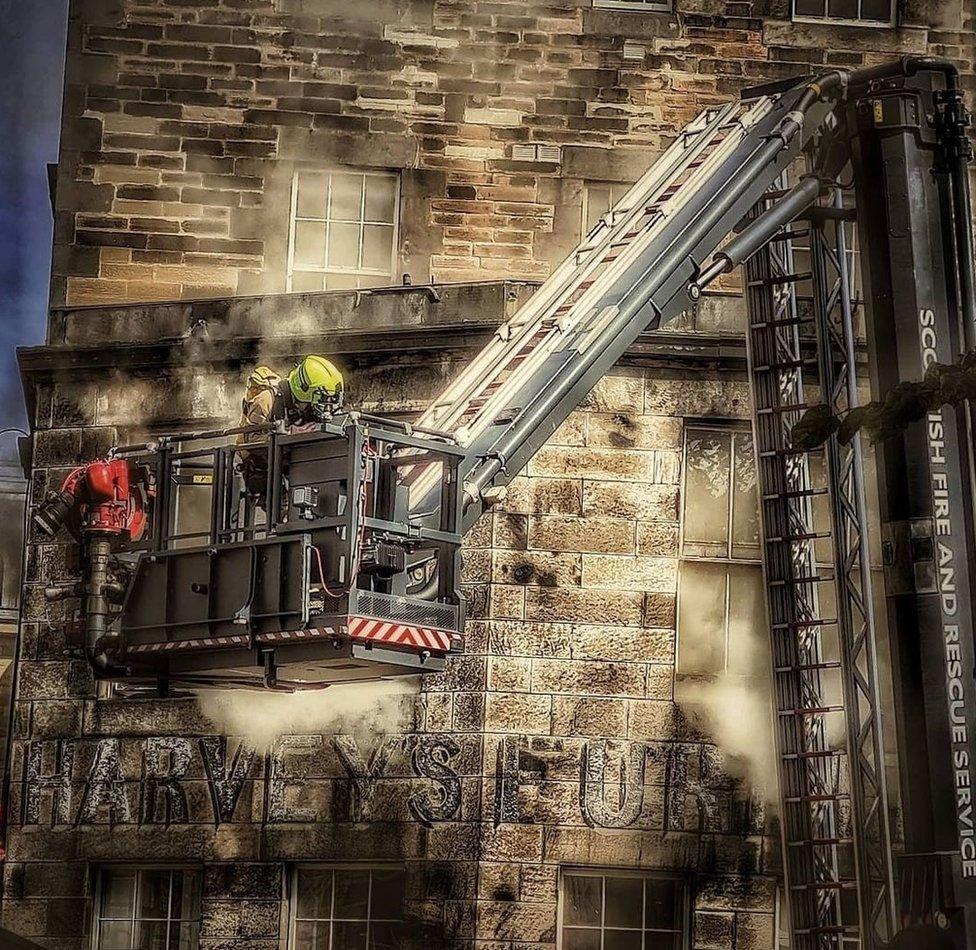
Firefighters checking the building outside the Oz Bar during the fire last year
Mr Corstorphine said it was a very interesting and exciting discovery.
He said: "The fire was a travesty and all the businesses are still closed more than a year on.
"The only good to come from it is that we would never have found all this historical evidence if it had not been for the fire."
Fraser Scott, 23, was one of the workmen who discovered the wall.
He told BBC Scotland: "There was a big thick layer of plaster and I had to carefully chisel it away without damaging the stone.
"It was detached from the wall because of the water damage.
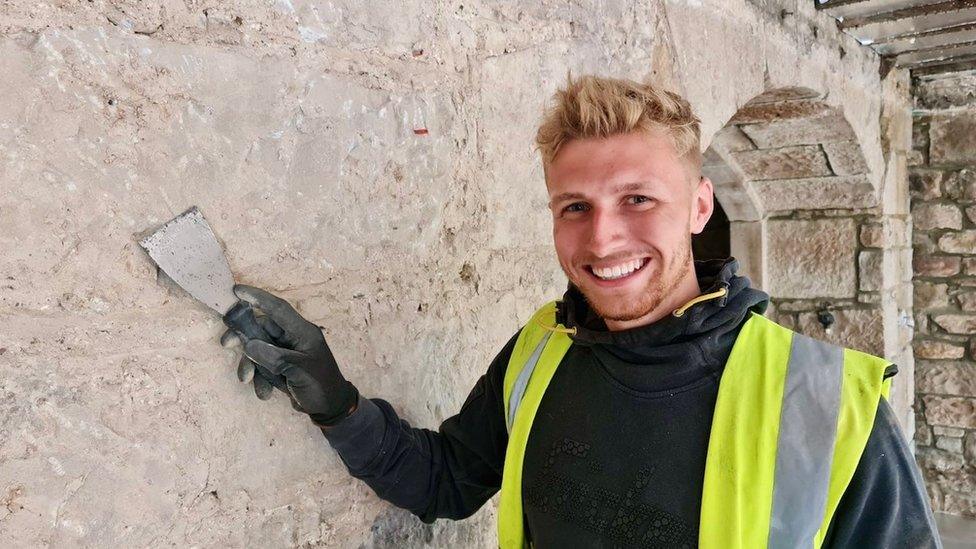
Fraser Scott was one of the workmen who uncovered the old stonework
"It took two days just to get that final layer off before we wire brushed it and cleaned it.
"I was over the moon when I saw there was such an old wall behind the plaster and I wondered what stories were behind it. It was very exciting."
The workers called Iain Ponton, the owner of the Oz Bar, when they made the discovery.
The 46-year-old said: "When I got a photograph from the contractors saying 'look what we've found' I immediately drove down to the pub.
"They had to remove layers and layers of wood and corrugated iron on top of plaster. When it all came off it exposed this arch.
"I got up on the ladder to see as I was very curious, and then over a week they revealed more and more."
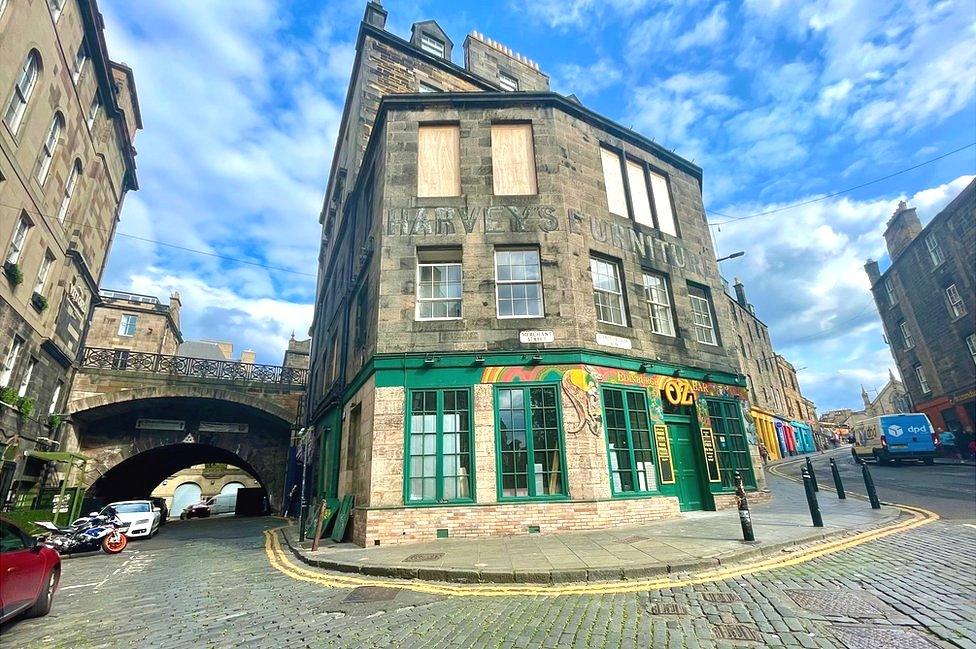
The Oz Bar is on the corner of Candlemaker Row and Merchant Street - on the other side of the building and up a level is the top of George IV Bridge which has the Elephant House and Patisserie Valerie - where the fire is understood to have started
His father, Tom Ponton, opened the pub in 1989 on the site of a derelict Harvey's furniture store.
"I thought maybe the wall was something to do with the furniture store," said Mr Ponton.
"I had no idea it would actually be evidence of all this history, it's incredible."
He has now vowed not to cover the stonework and archway, but will instead highlight them with lights within the pub.
- Published29 July 2022
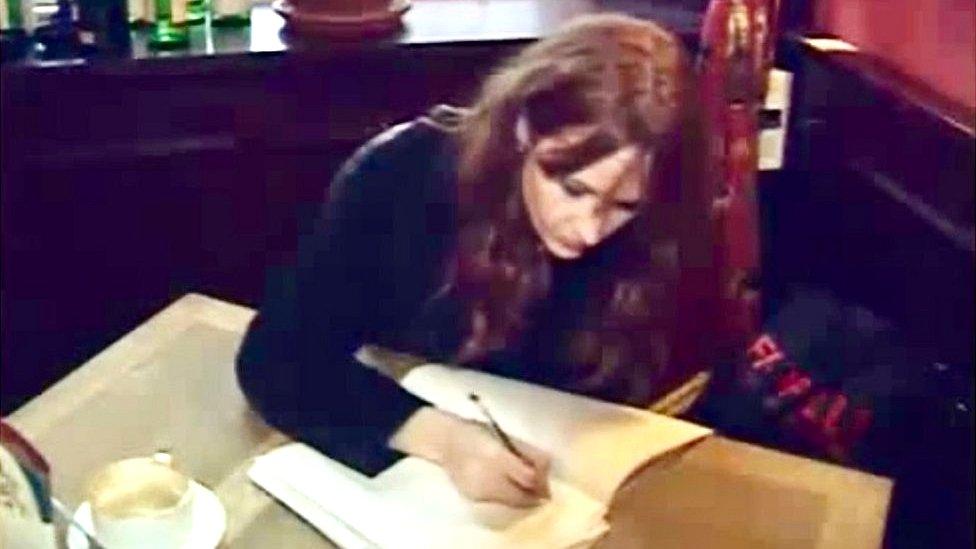
- Published30 September 2021

- Published24 August 2021
